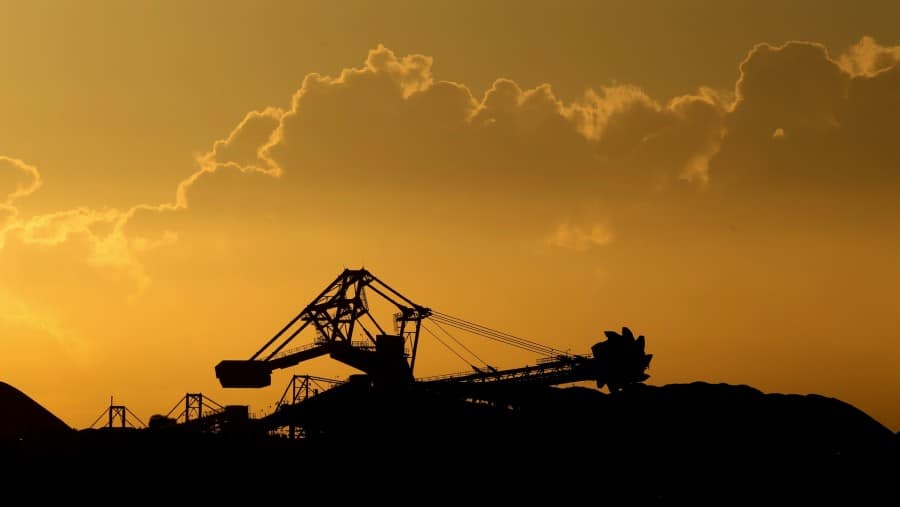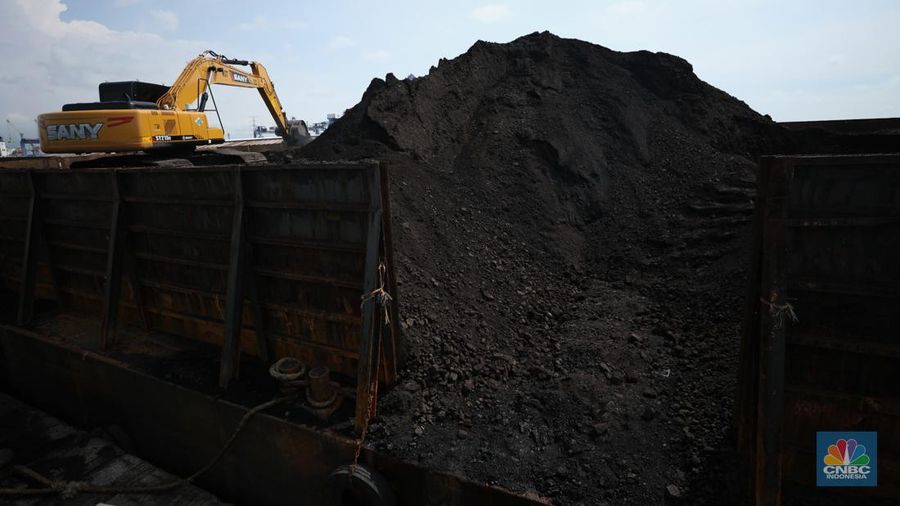
ENERGY transition is a mandatory menu in every company’s work program. For Medco Energi Internasional Tbk (MEDC), the energy transition is not only about following the current developments in the business world, but also as the company’s role in supporting the energy mix program launched by the Indonesian government.
Although currently the company’s core business is oil and gas (Migas), Medco’s management claims to also have a long-term plan in the energy business by developing the New Renewable Energy (NRE) business which leads to electricity.
Hilmi Panigoro, President Director of Medco Energi, explained that the management has set the gas business as a stepping stone in the ongoing energy transition process. Management is also well aware that the energy transition trend is driven by the urgency to suppress the climate crisis currently being faced by the government and the world. This shows that the company’s position is clear to jointly with the government take part in reducing emissions.
In the national energy mix, the government sets the gas energy mix to increase from the current position of 19% to 22% in 2025 and continue to grow the percentage to 24% in 2050. Likewise, the NRE mix from the current position of 11% to 23% in 2025 and continue to grow to 31% in 2050.
Medco itself has several work programs that support the achievement of government targets, such as gas-based electricity, solar and geothermal projects.
“The government is targeting 23% NRE in 2025 and 31% in 2050. Thank God, today Medco Power (a subsidiary of Medco Energi), we will build the Riau PTGU energy portfolio, then Kansai will build a gas to power alliance, and we drill the sixth well in Ijen, 100 MW. Solar Power Plant (PLTS), first in Sumbawa for 26 Megawatt Peak (MWp) and Bali for 50 MWp,” explained Hilmi recently.
Gas does dominate Medco’s reserves. As of the first semester of this year, Medco’s total oil and gas resources reached 1.233 billion barrels of oil equivalent (MMBOE) with details of gas resource reserves reaching 1,041 MMBOE or 84%, while oil was only 192 MMBOE or 16%.
Most electricity is currently also produced from the Steam Gas Power Plant (PLTGU). Until the first semester of 2021, electricity sales from PLTGU were recorded at 908 Gigawatt per hour (GWh) or 67% of Medco’s portion of electricity sales. The remaining 33% or 477 GWh comes from the sale of NRE power plants.
“MedcoEnergi’s reserves and resources are currently 84% in the form of Gas which can be monetized for the long term according to its Reserves Life,” said Hilmi.
He described several green energy-themed projects undertaken by Medco, namely the Riau PLTGU with a capacity of 275 MW. Then the Alliance with Kansai Electric for the PLTGU Project. The agreement includes a strategic partnership to bring together Kansai Electric’s global technical expertise with Medo Power’s experience in the power generation business in Indonesia. Medco’s management considers Kansai Electric as the largest integrated electricity company in Japan so that this collaboration is expected to open up opportunities in the electricity sector with competitive and clean tariffs. In addition, Kansai is also one of the experienced players for LNG gas to power and NRE.
There is also the development of Geothermal Ijen which is projected to have a capacity of 110 MW. Medco has conducted exploration drilling there. Medco Power Indonesia cooperates with Ormat Geothermal Power which has a Power Purchase Agreement with PLN for a period of 30 years. Unit 1 of this power plant is targeted to operate commercially in 2022-2023. Next is the Solar Power Plant (PLTS) in Sumbawa (26 MWp and Bali with a capacity of 50 MWp). Sumbawa PLTS (PV) was built to meet the electric current needs for PT Amman Mineral Nusa Tenggara which is also a subsidiary of PT Medco Energi Internasional Tbk (MEDC). While for PLTS in Bali targeted to operate commercially aka Commercial Operate Date (COD) in 2022.
The latest is one of the prestigious NRE projects, namely the Pulau Bulan PLTS Project whose electricity production will also be exported to Singapore. In this project, Medco Power together with the Consortium Pacific Light Power Pte Ltd (PLP) and Gallant Venture Ltd, a business group of the Salim Group, will develop a pilot project for importing electricity using a Solar Power Plant (PLTS) from Indonesia to Singapore on Pulau Bulan, Kepulauan Riau Province. The realization of the plan will be carried out after receiving the Principle Permit to import electricity from the Energy Market Authority (EMA) of Singapore. The project has a capacity of 670 MWp as an initial stage, which will provide the equivalent of 100 MW of non-intermittent electricity to Singapore. This is in line with the Singapore government’s plan to implement the 2030 Singapore Green Plan Program to increase the share of renewable energy.
The consortium has signed a Joint Development Agreement during the Singapore International Energy Week event on October 25, 2021 which was attended by the Minister of Energy and Mineral Resources, the Minister of Manpower/Second Minister of Trade and Industry, the Indonesian Ambassador to Singapore, and the Chief Executive of EMA.
The Right Proportion of Energy Transitions
There are important points that must be understood in looking at the National Energy General Plan (RUEN) target. Pursuing the national energy mix does not mean that Indonesia will simply abandon oil and gas. Energy transitions with the right proportions. If we look at the percentage of the energy mix, oil and gas has indeed decreased from the current 32% position to 25% in 2025 and 20% in 2050. But if we look at the volume, it actually increases. This is reasonable because the demand for energy as a whole also increases following economic growth.
In the National Energy General Plan (RUEN), the energy mix target in 2025 is estimated at 25% for oil and gas, 22% of the total demand, which is estimated to reach 400 Million Tons of Oil Equivalent (MTOE). Then the percentage will decrease in 2050 for 20% oil and 24% gas. However, in terms of volume, energy demand has increased to reach 1,000 MTOE. This proves that the role of fossil energy in the form of oil and gas in meeting energy needs is still very crucial.
Dwi Soetjipto, Head of the Special Task Force for Upstream Oil and Gas Business Activities (SKK Migas), also explained that the Head of the Special Task Force for Upstream Oil and Gas Business Activities (SKK Migas) Dwi Soetjipto said that oil consumption in 2050 is expected to increase by 139%, from the current consumption of around 1.66 million barrels per day (bpd) to 3.97 million bpd in 2050. Meanwhile, gas consumption is expected to increase even more. Gas consumption is currently around 6,000 million standard cubic feet per day (MMSCFD), and is expected to increase to 26,112 MMSCFD in 2050 or an increase of 298%.
“Besides meeting the growing energy needs, oil and gas is also used to meet the feedstock needs for the development of the industrial sector, especially the petrochemical industry,” said Dwi.
For this reason, Medco, said Hilmi, will not forget the oil and gas business just like that. He said the balance in managing the business portfolio between fossil and NRE was the key for the company to continue to grow in the future. “I see it like this, SKK Migas shows that the demand for energy mix of NRE is increasing, fossil fuels are decreasing. But the volume is still increasing. In this energy transition process, gas and oil remain important. We don’t want that when the transition occurs, the infrastructure is not ready, so suddenly there will be a shortage of energy,” said Hilmi.
According to him, a study in the Middle East shows that today, stopping exploration in oil and gas only relies on the existing NRE infrastructure, which is not ready for oil prices to increase three times. An increase in demand or demand can suddenly increase gas prices. This is what happens in developed countries such as Europe and China. “Don’t let it happen, especially in Indonesia,” said Hilmi.
Meanwhile, Medco’s study shows that electric vehicles will be developed with acceleration, until 2040. There is a loss of oil demand of around eleven million barrels per day within 20 years, but there is a growth in demand for aviation, petrochemicals by 1% per year. This illustrates that 1 million barrels per day (BPD) and 12 billion cubic feet per day (BSCFD) of gas in 2030 are still needed for a country like Indonesia.
Asean Indonesia is unique, it cannot be equated with Europe. We are committed to reducing carbon, but we have to be realistic in providing affordable energy,” said Hilmi.
Meanwhile, Fabby Tumiwa, Executive Director of the Institute for Essential Services Reform (IESR), explained that the world community’s efforts to prevent the worsening of the climate crisis were carried out through the energy transition from fossil energy to renewable energy. Utilization of renewable energy has become the world’s mainstream and has opened up new business opportunities that energy businesses must respond to.
“I think Medco has read the direction of the energy transition and that Medco already has a company strategic plan anticipating this change since 3-4 years ago,” Fabby said to Dunia Energi, Monday (22/11).
He explained that in the field of power generation, Medco has started to switch to developing renewable energy, especially PLTS and strengthening their investment in PLTP. For PLTG, Medco has been involved in this plant for a long time. In the future PLTG feedstock from gas can be substituted by cleaner power fuels so that it can reduce Greenhouse Gas (GHG) emissions. “So, my conclusion is that Medco’s business move is right,” said Fabby.




